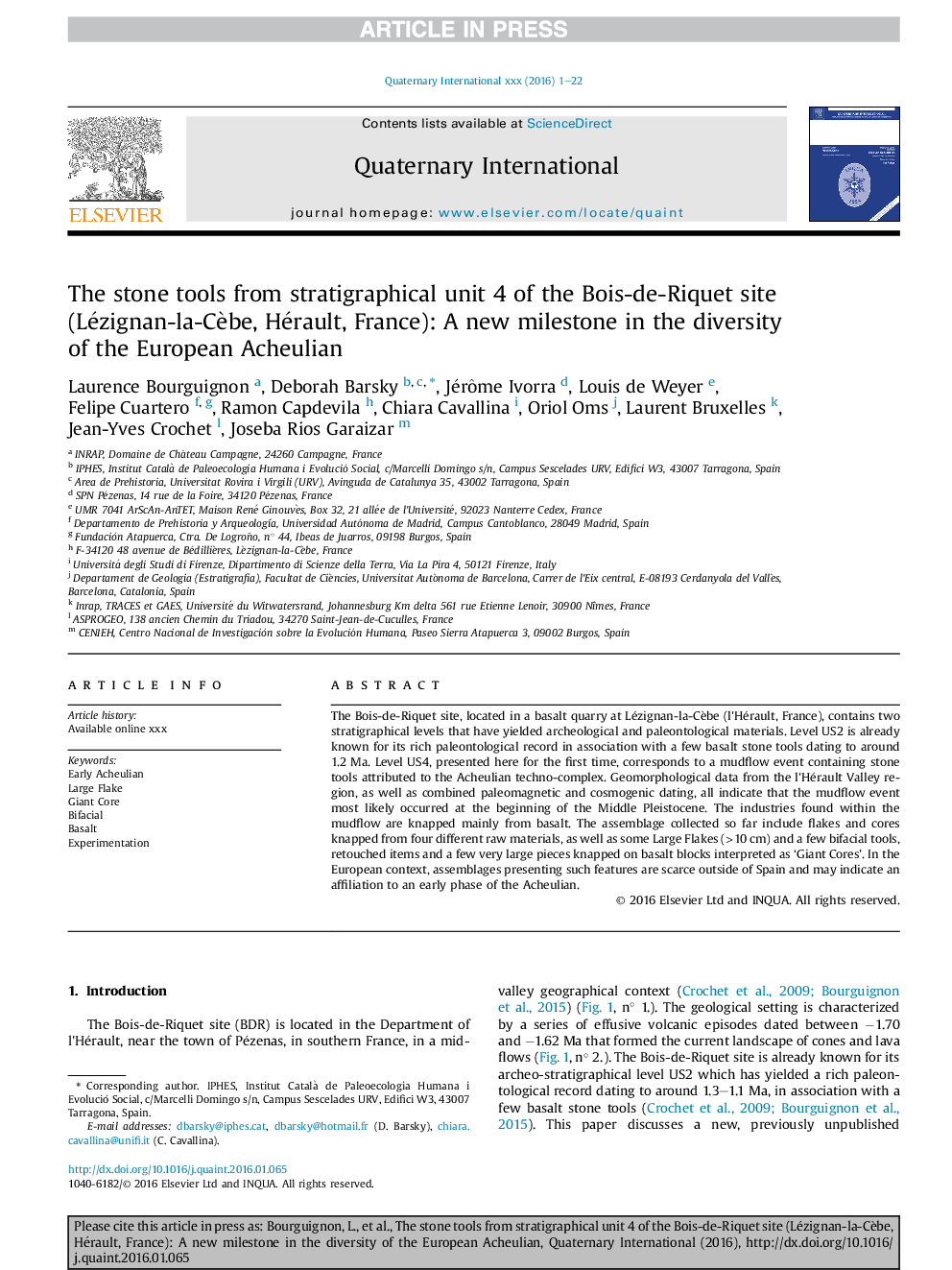| Article ID | Journal | Published Year | Pages | File Type |
|---|---|---|---|---|
| 5113845 | Quaternary International | 2016 | 22 Pages |
Abstract
The Bois-de-Riquet site, located in a basalt quarry at Lézignan-la-Cèbe (l'Hérault, France), contains two stratigraphical levels that have yielded archeological and paleontological materials. Level US2 is already known for its rich paleontological record in association with a few basalt stone tools dating to around 1.2 Ma. Level US4, presented here for the first time, corresponds to a mudflow event containing stone tools attributed to the Acheulian techno-complex. Geomorphological data from the l'Hérault Valley region, as well as combined paleomagnetic and cosmogenic dating, all indicate that the mudflow event most likely occurred at the beginning of the Middle Pleistocene. The industries found within the mudflow are knapped mainly from basalt. The assemblage collected so far include flakes and cores knapped from four different raw materials, as well as some Large Flakes (>10 cm) and a few bifacial tools, retouched items and a few very large pieces knapped on basalt blocks interpreted as 'Giant Cores'. In the European context, assemblages presenting such features are scarce outside of Spain and may indicate an affiliation to an early phase of the Acheulian.
Keywords
Related Topics
Physical Sciences and Engineering
Earth and Planetary Sciences
Geology
Authors
Laurence Bourguignon, Deborah Barsky, Jérôme Ivorra, Louis de Weyer, Felipe Cuartero, Ramon Capdevila, Chiara Cavallina, Oriol Oms, Laurent Bruxelles, Jean-Yves Crochet, Joseba Rios Garaizar,
